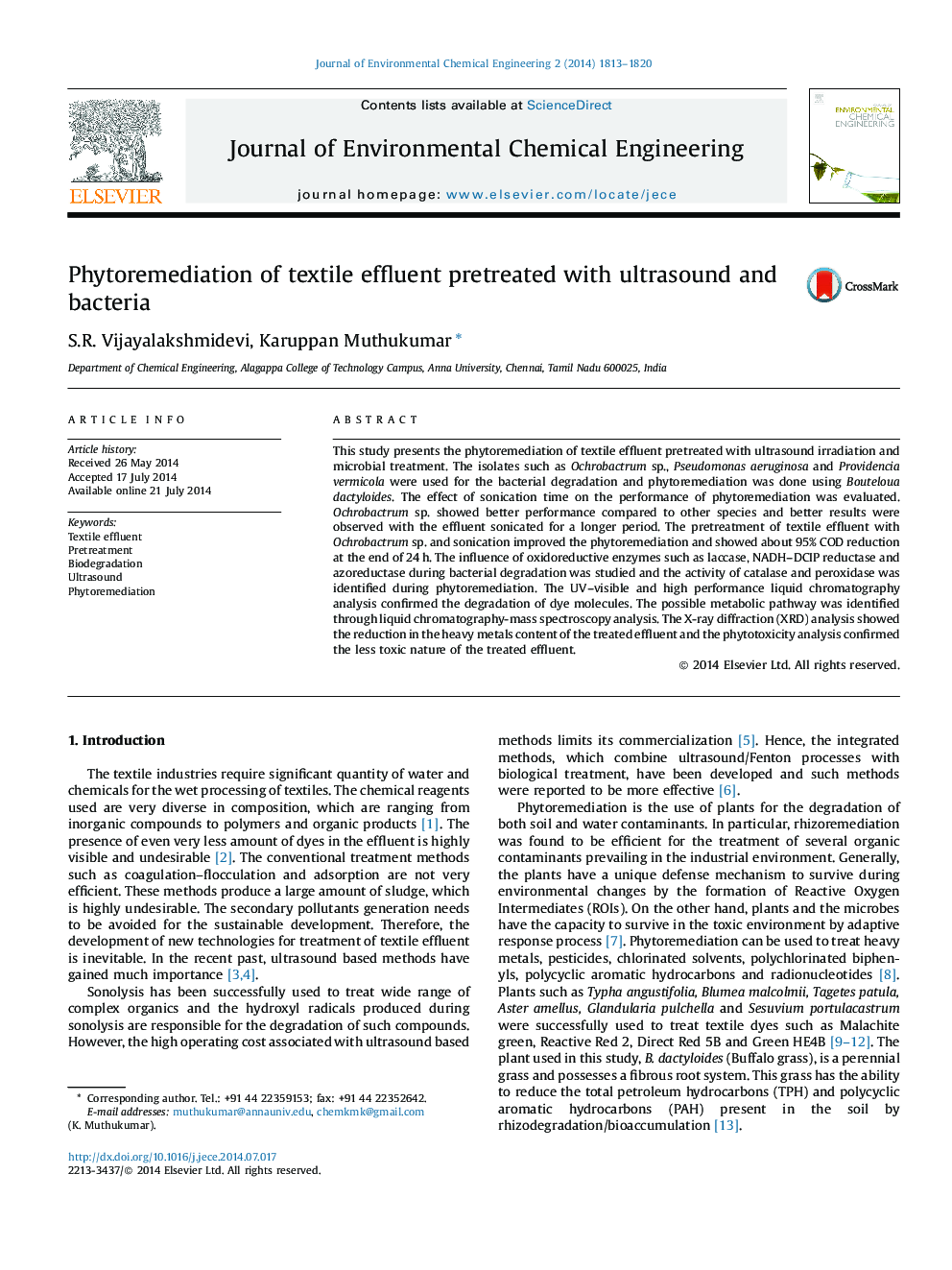| کد مقاله | کد نشریه | سال انتشار | مقاله انگلیسی | نسخه تمام متن |
|---|---|---|---|---|
| 222015 | 464268 | 2014 | 8 صفحه PDF | دانلود رایگان |

• Ultrasound and bacterial assisted phytoremediation were carried out.
• Pretreatment showed faster degradation of textile effluent.
• Drastic reduction in the toxicity of the effluent was observed.
This study presents the phytoremediation of textile effluent pretreated with ultrasound irradiation and microbial treatment. The isolates such as Ochrobactrum sp., Pseudomonas aeruginosa and Providencia vermicola were used for the bacterial degradation and phytoremediation was done using Bouteloua dactyloides. The effect of sonication time on the performance of phytoremediation was evaluated. Ochrobactrum sp. showed better performance compared to other species and better results were observed with the effluent sonicated for a longer period. The pretreatment of textile effluent with Ochrobactrum sp. and sonication improved the phytoremediation and showed about 95% COD reduction at the end of 24 h. The influence of oxidoreductive enzymes such as laccase, NADH–DCIP reductase and azoreductase during bacterial degradation was studied and the activity of catalase and peroxidase was identified during phytoremediation. The UV–visible and high performance liquid chromatography analysis confirmed the degradation of dye molecules. The possible metabolic pathway was identified through liquid chromatography-mass spectroscopy analysis. The X-ray diffraction (XRD) analysis showed the reduction in the heavy metals content of the treated effluent and the phytotoxicity analysis confirmed the less toxic nature of the treated effluent.
Figure optionsDownload as PowerPoint slide
Journal: Journal of Environmental Chemical Engineering - Volume 2, Issue 3, September 2014, Pages 1813–1820